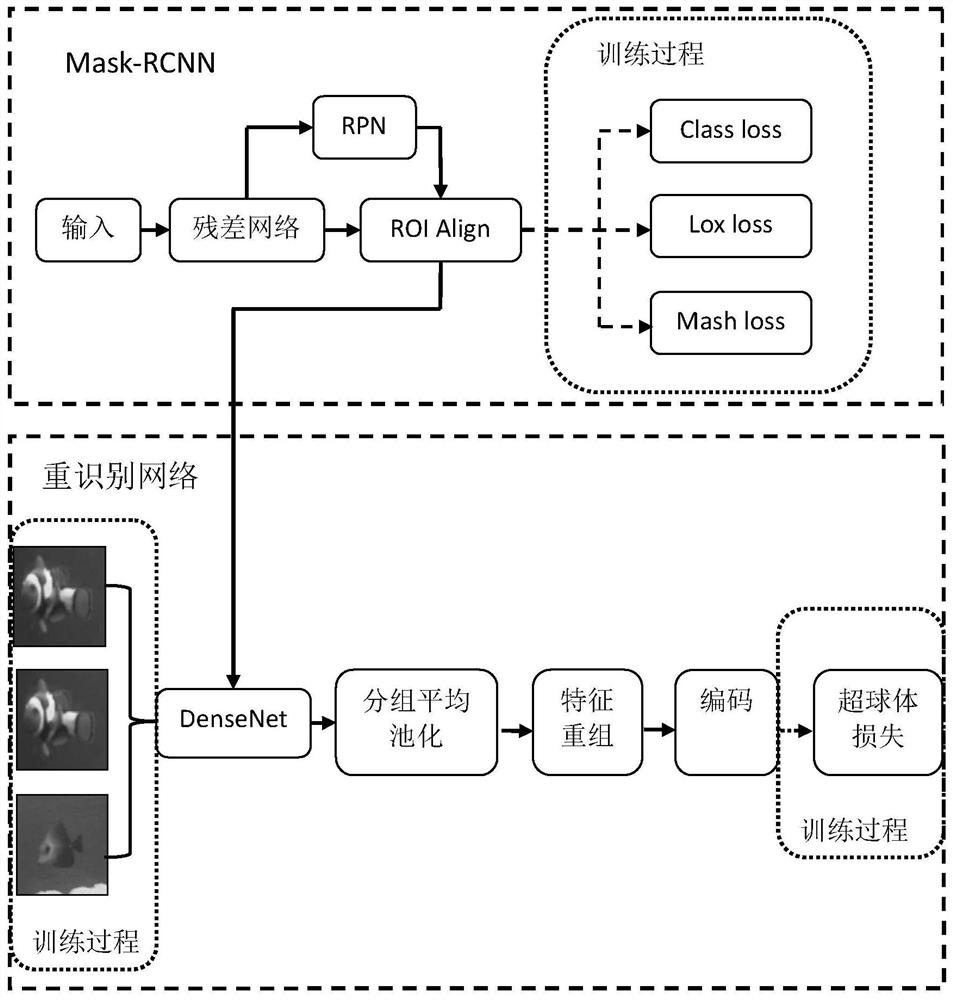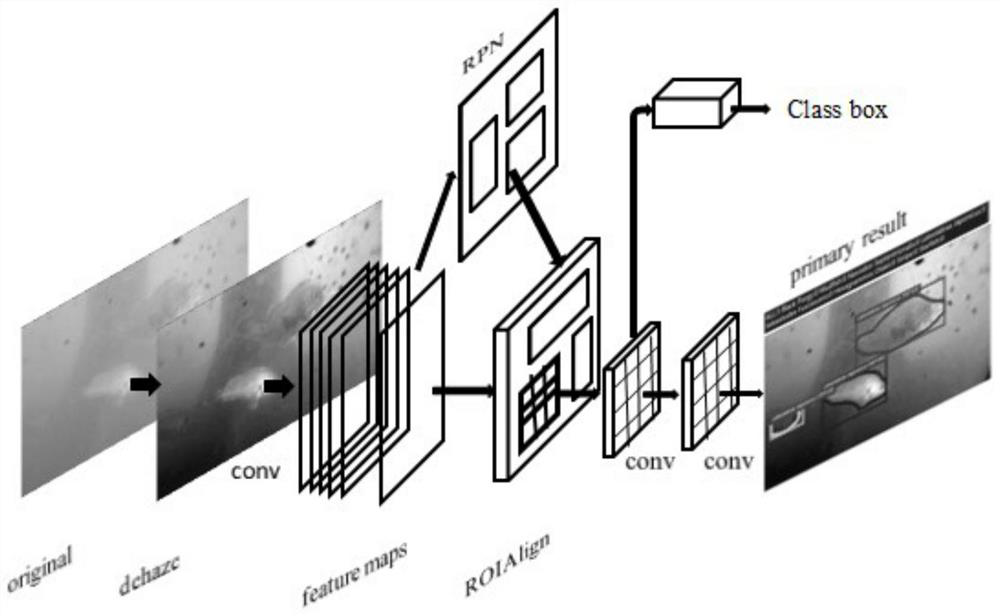Object re-identification method based on densely connected convolutional network hypersphere embedding
A densely connected, convolutional network technology, applied in character and pattern recognition, instrumentation, computing, etc., can solve target re-identification errors, fast swimming, large-scale shape changes, underwater deformation target monitoring difficulties, complex imaging conditions, etc. problem to achieve the effect of mitigating the disappearance of the gradient
- Summary
- Abstract
- Description
- Claims
- Application Information
AI Technical Summary
Problems solved by technology
Method used
Image
Examples
Embodiment 1
[0041] Embodiment 1: Taking the dynamics of fish in the ocean underwater environment as the re-identification object.
[0042] The specific flow chart of this embodiment is as follows figure 1 shown.
[0043] In this embodiment, a section such as figure 2 As shown, the video of fish activities in the marine environment (1920*1080 pixels, 25 frames per second) captured by the marine ranch in Shandong Province is used as the video to be detected and re-identified.
[0044] The following steps should be described in detail in conjunction with the accompanying drawings and specific results, and should only be outlined steps in the summary of the invention.
[0045] Step 1. Create a data set from a large number of fish images captured in the marine ranch, and mark the positions and numbers of all fish in the images (the same fish has the same number);
[0046] Step 2: Use Mask-RCNN to detect and identify the segmentation network on the built data set. For the re-identification ...
PUM
 Login to View More
Login to View More Abstract
Description
Claims
Application Information
 Login to View More
Login to View More - Generate Ideas
- Intellectual Property
- Life Sciences
- Materials
- Tech Scout
- Unparalleled Data Quality
- Higher Quality Content
- 60% Fewer Hallucinations
Browse by: Latest US Patents, China's latest patents, Technical Efficacy Thesaurus, Application Domain, Technology Topic, Popular Technical Reports.
© 2025 PatSnap. All rights reserved.Legal|Privacy policy|Modern Slavery Act Transparency Statement|Sitemap|About US| Contact US: help@patsnap.com



